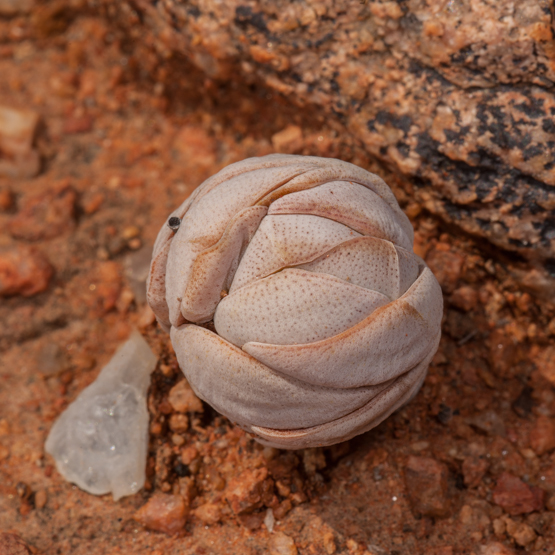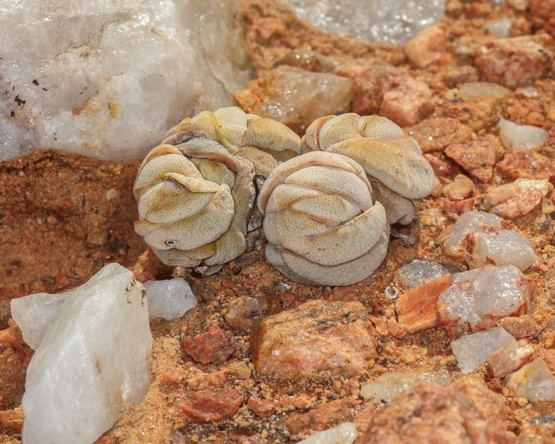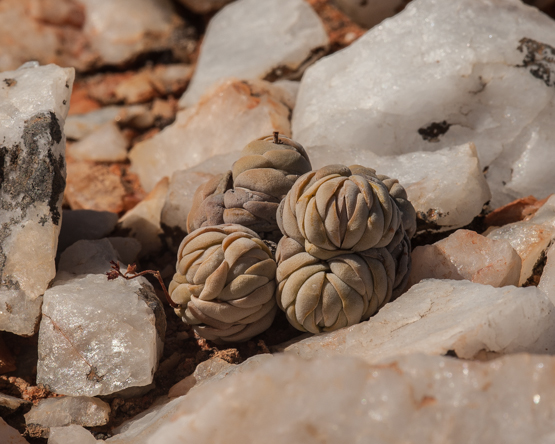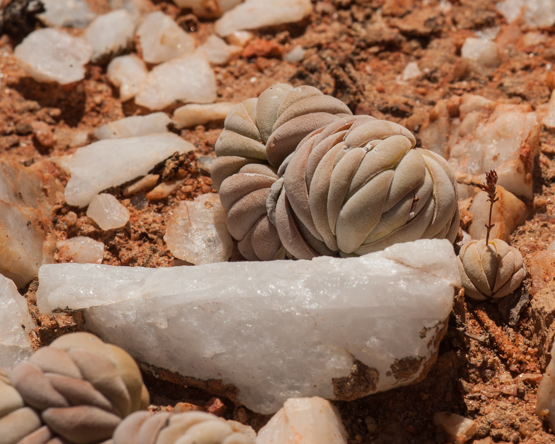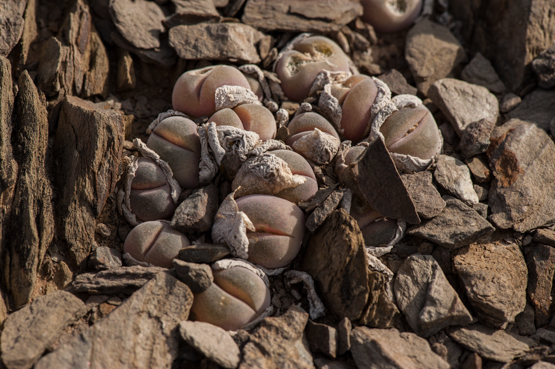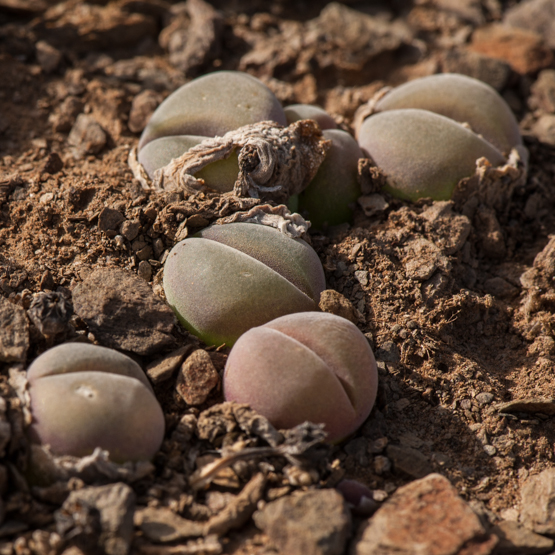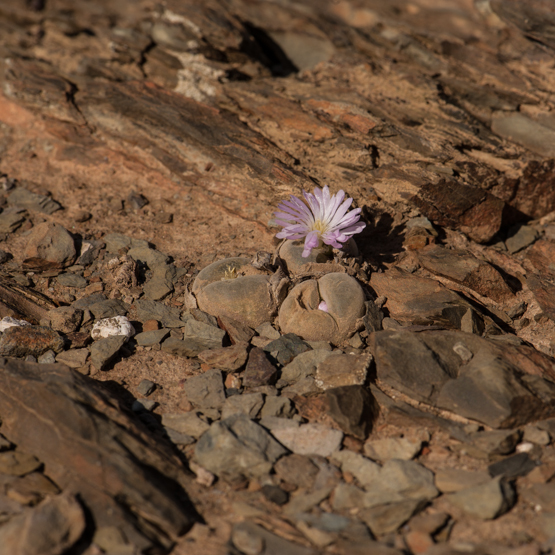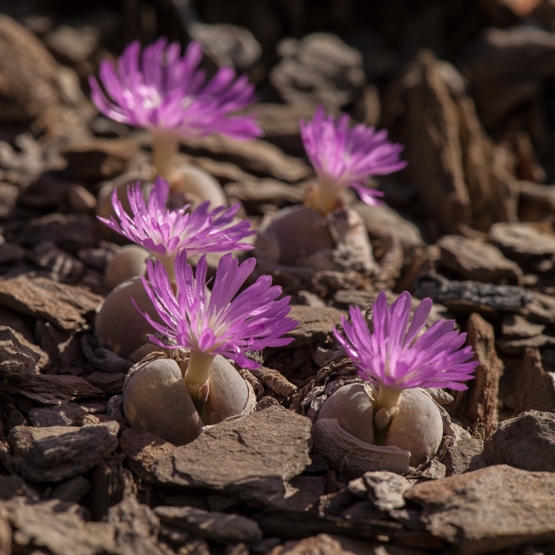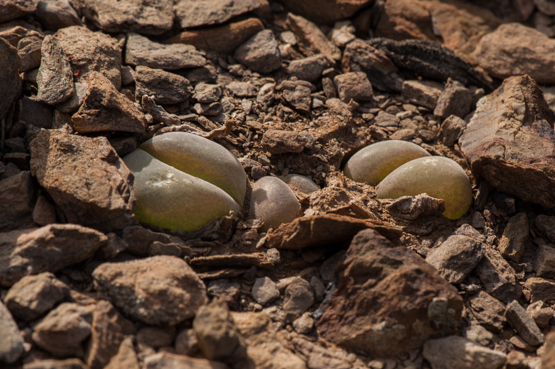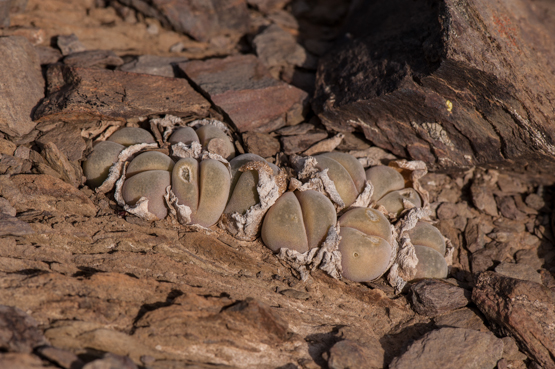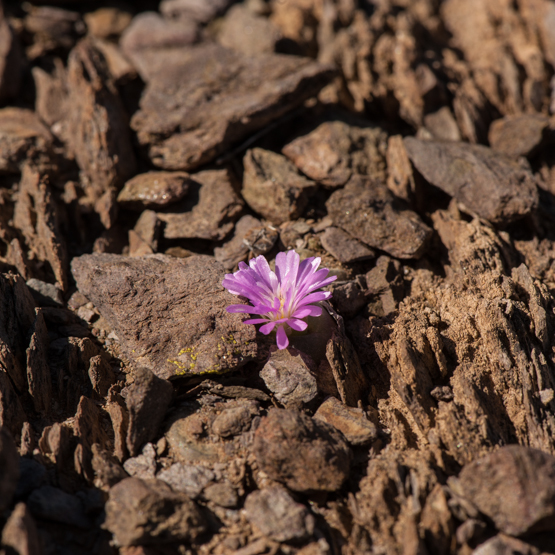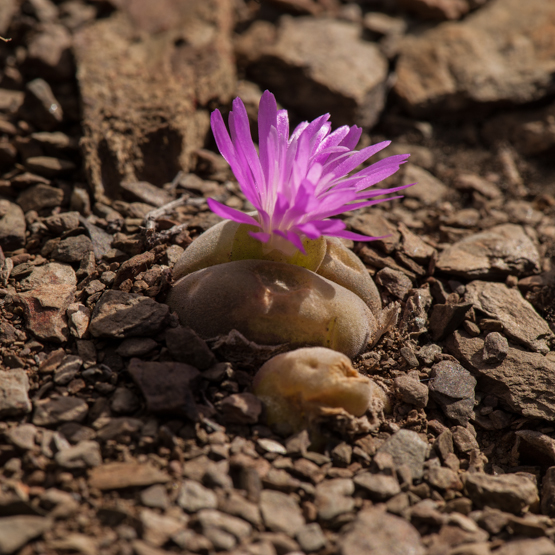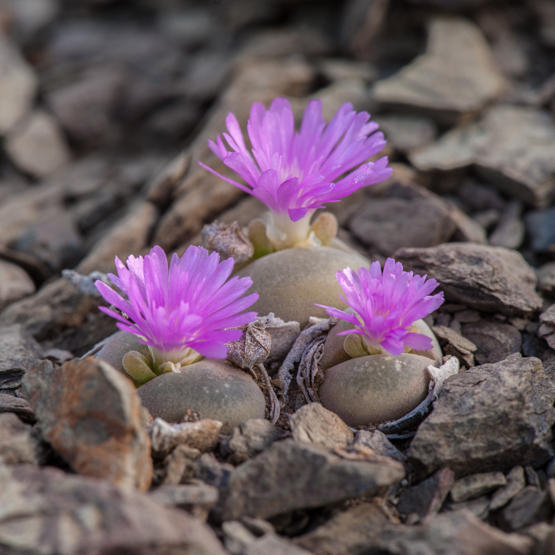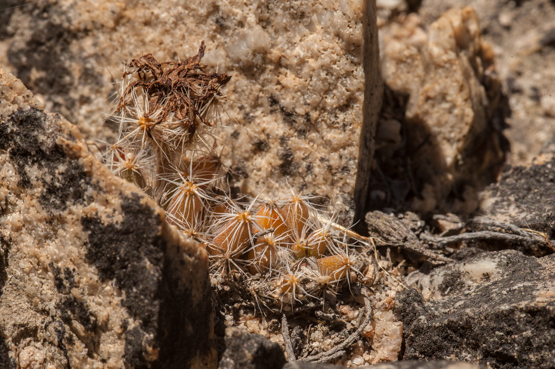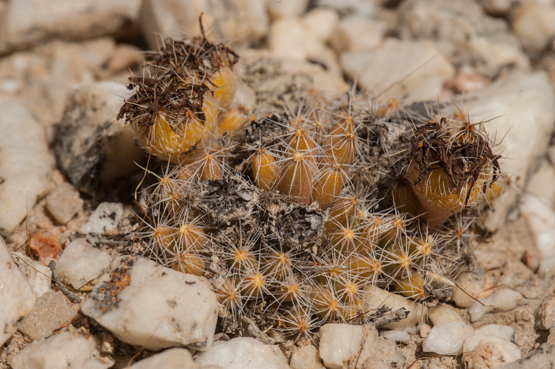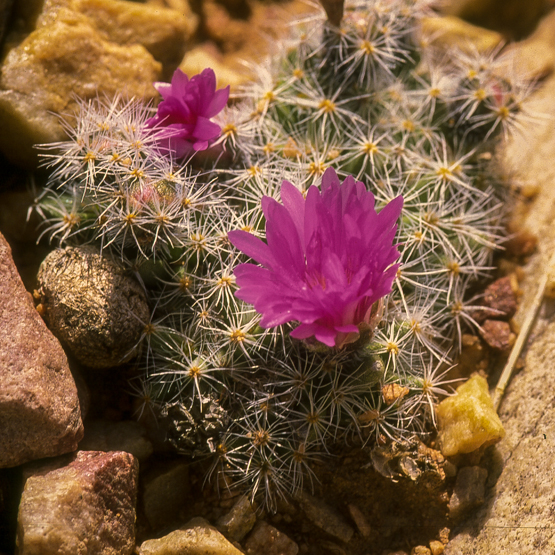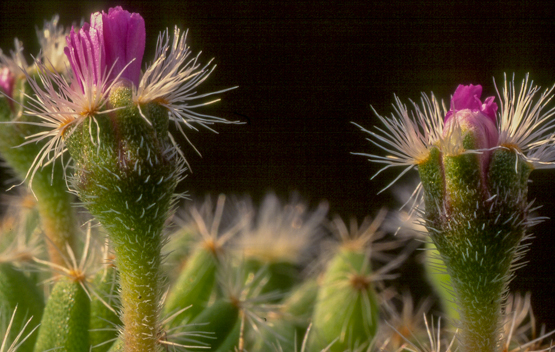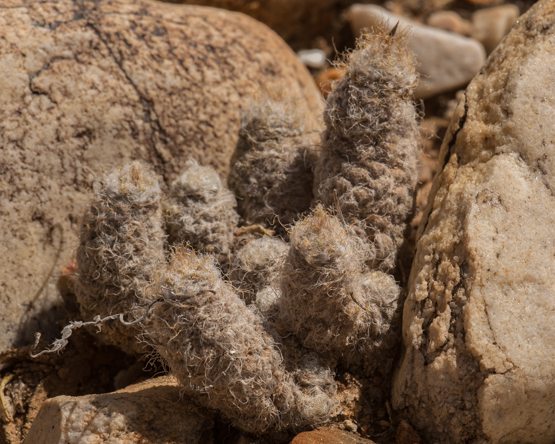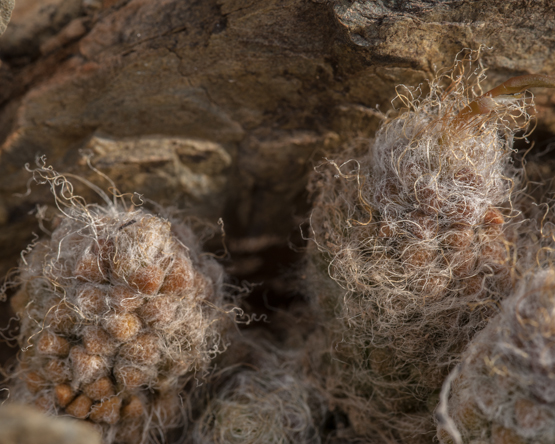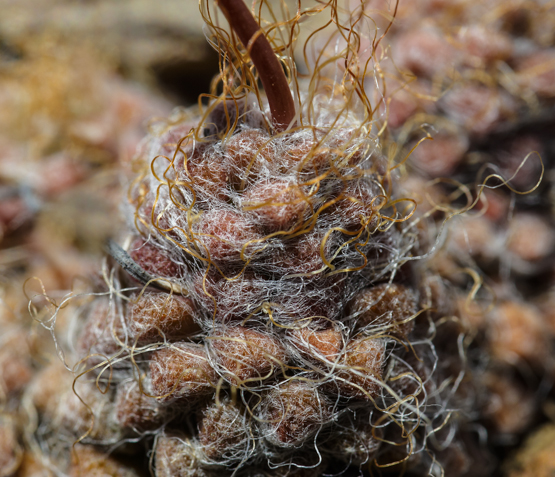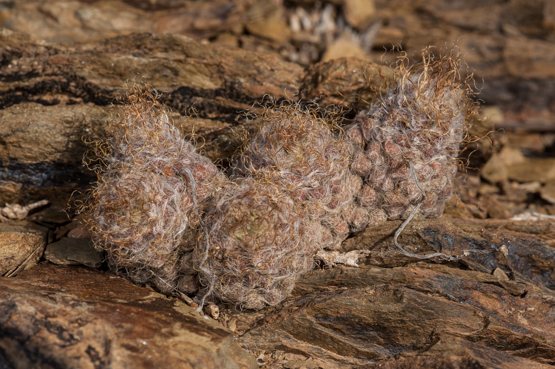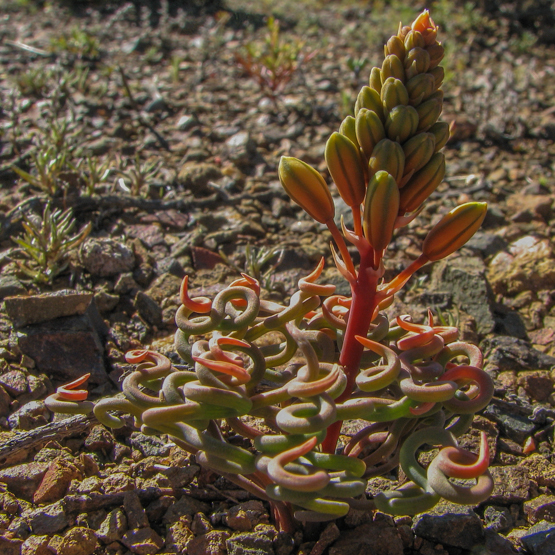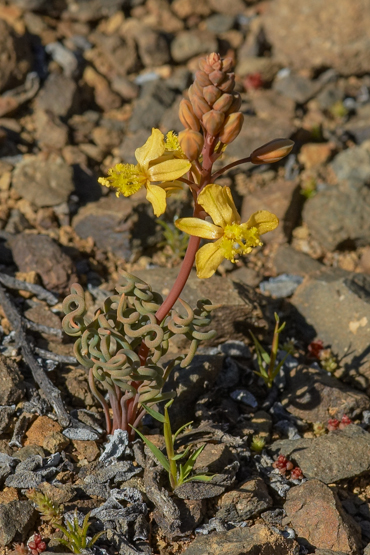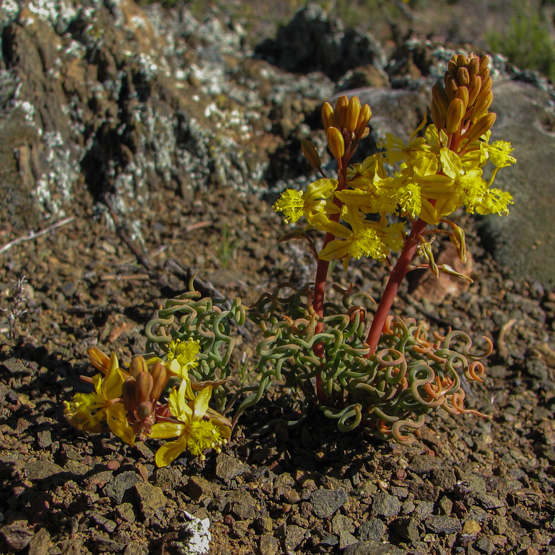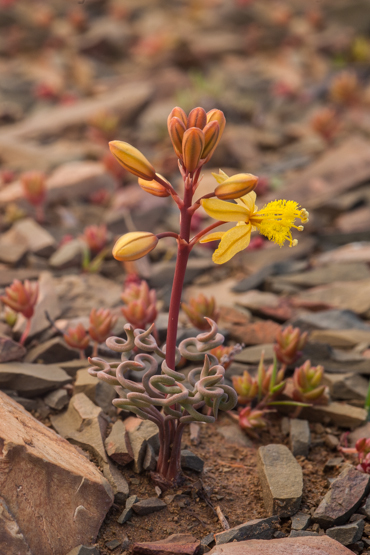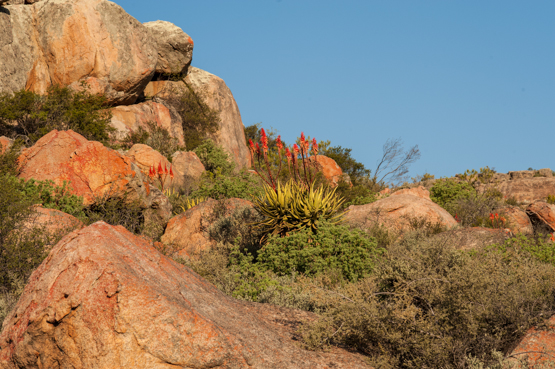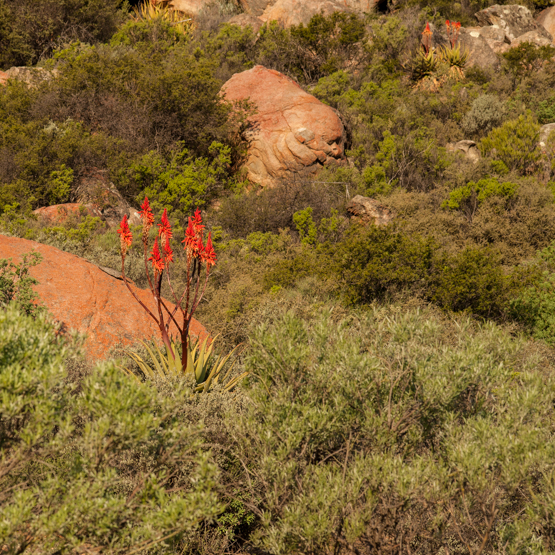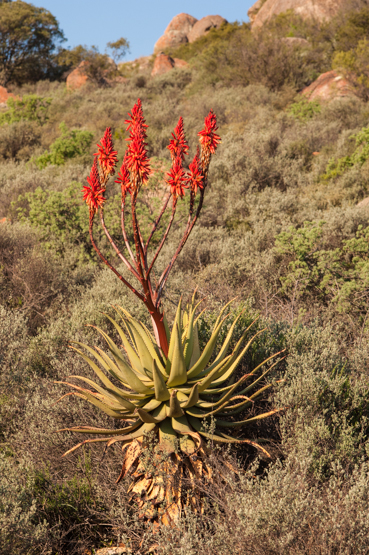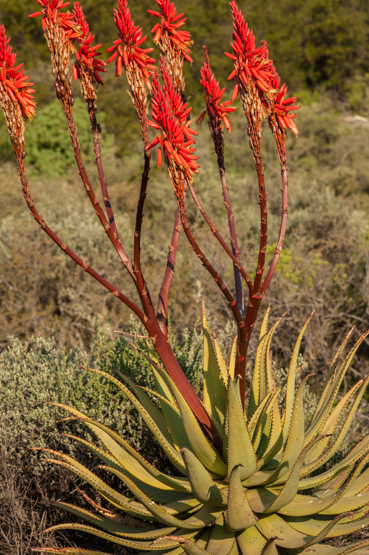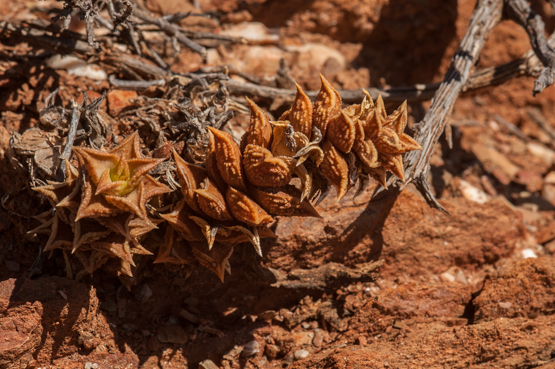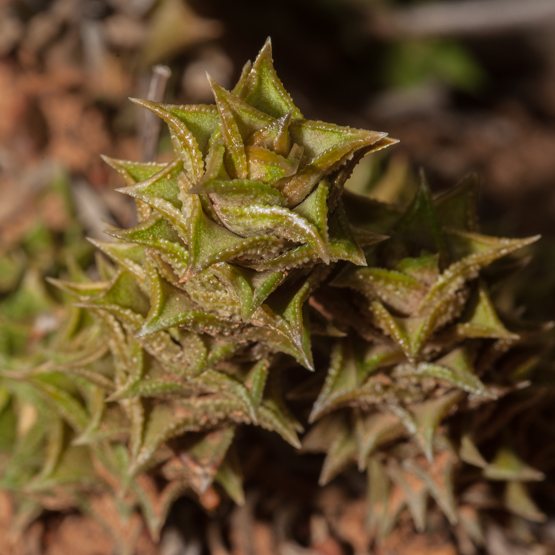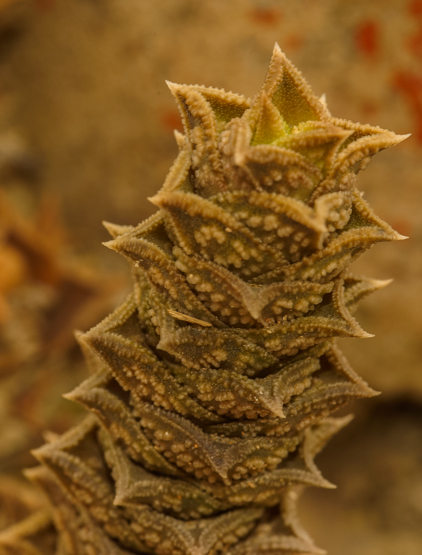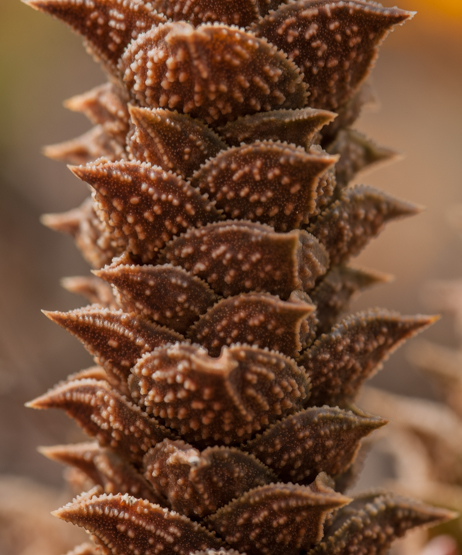It is probably safe to say that C. alstonii cannot be confused with any other plant species because of its unique appearance. The leaves are arranged in two rows and closely adpressed – at least in nature; in cultivation this is difficult to maintain. Each of the almost spherical rosettes is 2-5 cm in diameter.
The plants are found in northern Namaqualand, from just south of Lekkersing to near Komaggas, where they grow on low, gently sloping hills usually covered with quartzite gravel. This is a rather restricted distribution area, but in some places the plants are quite common.
Tag: South African succulents
Gibbaeum nebrownii (2)
Gibbaeum nebrownii (1)
It has taken me a couple of years to be at the right spot at the right time to photograph this species in flower. I knew of only one small locality, some 130 kms from where I lived and the few times I went there they were not in flower. Nowadays I live much nearer, but the main thing is that I found out that the plants flower a few months earlier than almost all other Gibbaeums (late April and early May). Anyway, yesterday I went there with two friends and lo and behold: there they were, in full bloom.
“The Gibbaeum Handbook” by G. C. Nel (1953), gives the following information:
The shale hillocks, on which it seems to thrive best, consist of laminated shales and are entirely devoid, at times, of any other vegetation. They are quite bare and G. nebrownii is embedded in the soil and only the top surface is exposed. During the hot summer months, it is withdrawn into the soil and one only sees a brown membrane, the remainder of the old leaves, and is, consequently, very difficult to find. It resembles a Lithops or an Ophthalmophyllum in this respect. It is squeezed into the crevices between the slate layers”.
The species is only found sporadically in the western part of the Little Karoo.
The first two pictures were taken 30 June 2013, the others 4 May 2014
Trichodiadema densum
It is easy to see why this species is so popular in cultivation. The plants are compact (the most compact of the whole genus) and have thick fleshy roots.
The diadems at the tips of the leaves are the largest of all Trichodiademas and the flowers (appearing in winter and spring: June- October) are 4-5 cm in diameter.
One can come across the plants from Uniondale to Willowmore and the southern Great Karoo, where they mainly grow in white quartz fields.
The last picture shows a plant in cultivation (scan from slide)
Anacampseros albidiflora (2)
Anacampseros albidiflora (1)
Bulbine torta (2)
Bulbine torta (1)
What sets these plants apart from other Bulbines are the peculiar, thread-like, usually coiled leaves. They appear from a flat-based underground tuber and are 3.5-12 cm long and about 1 mm wide. In cultivation they become both wider and straighter.
According to literature the plants occur on sandy and rocky places from Vanrhynsdorp and Calvinia southwards to Sutherland and Clanwilliam. However, all the photos here were taken on our farm near Matjiesfontein, about 100 kms south of Sutherland. The flowers appear from August to October.
Aloe khamiesensis
Astroloba corrugata
Unless they grow in deep shade (they are often found under shrubs), these plants commonly have a sickly orange-brown colour. One regularly sees the same phenomenon in some other species of Astroloba and Haworthia (see H. viscosa). The plants occur from Worcester to Ladismith and can be locally abundant. They are up to 20 cm tall. Doreen Court in her “Succulent flora of southern Africa” mentions a height of 30-80 cm, but this is probably a mistake. The flowers are produced in late spring and summer (Oct.-Feb.).
The picture of the flowers was taken in cultivation (scan from slide).
